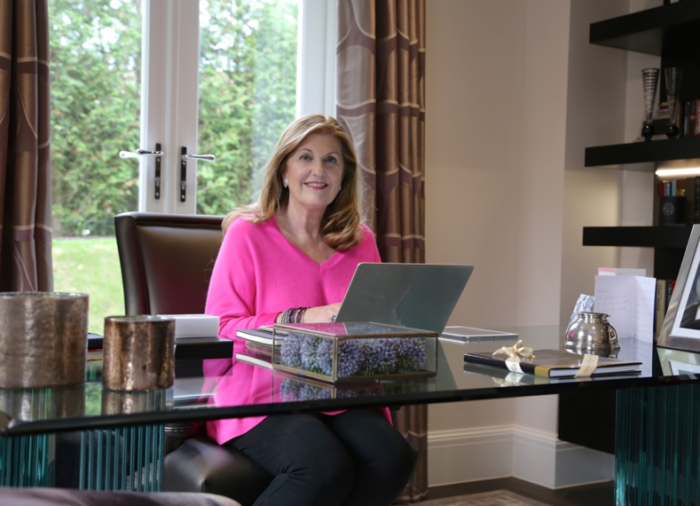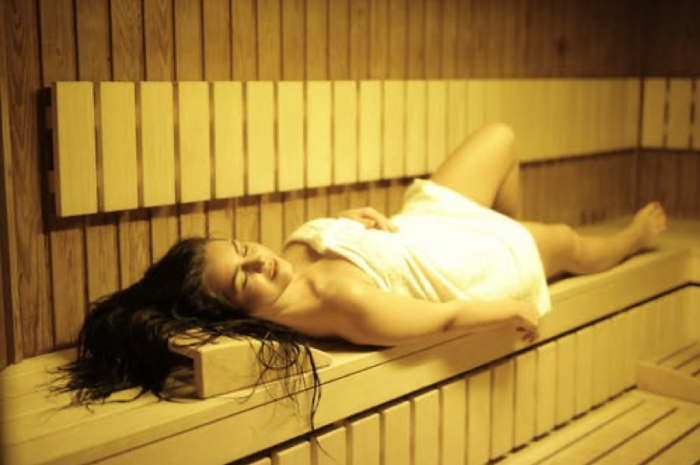
Sue Harmsworth has been a key figure in the world of spas since the 1970s, establishing her company ESPA in 1993, creating and evolving the whole concept of high level Spas and designing Spas in stunning locations around the world. The cornerstone of ESPA was the quality of therapists they employed. Even since selling ESPA in 2017, she is still involved in designing new destinations and in seeing the evolution of integrative Wellness destinations. She has been the moving force behind the creation of SATCC – the Standards Authority for Touch in Cancer Care in which ThinkTree Hub is playing a key role
Now in her mid-70s, you might have thought she was ready to take life a little easier. However her commitment to the industry and to clients experiencing serious illnesses have led her to push ahead with revolutionising standards for therapists working with people touched by cancer.
Like many of us, she has lost friends to cancer and has watched family members battle through it, but the impetus is much deeper than this. “It goes back a really long way, to the late 80s when I first set up a consultancy and then designed ESPA in 1993. I was the person who first brought together massage, beauty and fitness into one concept. The E in ESPA always stood for education – because you can have the most beautiful spa in the world, but you need the therapists to match. When I started, it was British therapists that people wanted all around the world, because the training standards were high. With a minimum of two or three years’ to qualification, they had great anatomy and physiology, built-in lymph draining training, they knew skin properly and it was all there.”
Then the Spa industry blossomed and two simultaneous problems emerged. “With the exponential growth of Spas came an upsurge in demand for therapists and for different skill sets too. Secondly, training courses had become that much shorter – sometimes just a long weekend for massage for instance. So where ESPA had been offering post-grad training in very specialist treatments, we had to bring some of the younger, new people up to the standards of knowledge and experience expected in our Spas.

“But what really galvanised me to start SATCC was that more and more people were, and are, coming to spas with cancer. We had had the myth, thankfully now completely disproved, that massage can spread cancer round the body which had caused many of the issues in the past with clients.” It was this myth that had caused insurance companies to make massage a contraindicated treatment for people with cancer.
While there is now no need to revisit out the gaping logic holes in that outdated stance, there is still a job to be done in ensuring that therapists of all kinds can offer appropriate treatments for people undergoing treatment for cancer or recovering from it.
The growth in cancer is exponential: “One in two of people born after 1970 are projected to have cancer at some point. This means that 50% of people visiting may be turned away, even when they are two or three years’ clear. In ESPA, we had developed our own training programmes for therapists, so there was never an issue with treating people. But I began to hear stories about people coming for treatments and being turned away, sometimes in a way that was not very nice. Not that it was intentional. It was that they, or the receptionists, just didn’t have the words to know what to say. So as an industry we needed clearly to do something about this.”
Sue’s starting point was to get the training right. “Training providers everywhere were launching courses, but some of these were just for one day, and also for therapists that were not necessarily at Level 3. What we have done with SATCC is to bring together some of the leading training providers in the UK – with more continually coming on. The feedback has been phenomenal. We have had a lot of contact from therapists and from training schools and it is clearly hugely needed.” Sue’s expertise in running companies has been invaluable in gaining agreement amongst providers.
“I think therapists owe it to the clients – with that one in two figure – to have the confidence and the knowledge to treat people appropriately…. So that they are not frightened about what they can or cannot do, or when they see a client with scars from mastectomies, they don’t show anything on their face, or when they deal with a client with a wig, they know how to handle it. Knowing all the contraindications for different cancers and different treatments is essential. The training requirements are not a lot of time for people with level 3 and the investment in doing the extra pieces of training is not much and with some of the training providers they can even do it in a staged way. What we have is a standards charter that all the training providers have agreed to.” Sue suggests that if you are working in a salon or spa, try and persuade the owner or director to train the whole team.
Lockdown has been a learning curve for SATCC. The trainers have found that a lot of the theory and contraindications can be done on line – but obviously not the practical elements or case studies.
While Sue’s background is in Spa settings, she was adamant that the process was inclusive, that therapists working in every setting, private or employed could be included. “This is one reason we collaborated with ThinkTree, because you can accredit. Being inclusive means that we can reach all therapists, not just those who are Spa-based, but people in private practice, beauty settings and those who are mobile. We are collaborating with both ThinkTree Hub and SpaBreaks with a separate information site for training providers who wish to become accredited.”
There is a bigger picture too, moving forward: “I am working a lot now with medical people for my Wellness destinations as well as complementary practitioners. What I felt also was that if we could get the cancer bit right, it would really help therapists in their understanding in other areas such as anxiety and mental health, sleep deprivation, weight gain and type 2 Diabetes.”
If you are wondering whether Wellness destinations are just a rebrand of spas, think again. “We have to define, what is medical, what is wellness, what is spa and what is beauty. With Wellness we are building complementary practices, rehab, sleep programmes, all those kinds of things.” Sue is adamant that we have to avoid creating consumer confusion “Don’t go calling yourself a Wellness destination if you are a spa and you don’t have nutritionists or psychological counselling etc. In a spa setting consumers expect facials, treatments, steam, and sauna. In a beauty setting consumers expect predominantly electrical work and facials and some massage.” I would rather we keep things simple and done well, than we try to do too much and say too much. Less is more

We asked Sue about her passion for Wellness “I have been doing Wellness, actually, for 40 years. All our treatments involved breathwork and relaxation techniques and clinical aromatherapy. We did Ayurveda at bigger spas, for example. The future is going to be a combination of all this. The next generation of destinations is going to deal with mental health cognitively and mindfully. In the ones I am designing, for instance, we have medical doctors and we have Buddhist monks for mindfulness. For insomnia, you need a psychologist. For sleep deprivation you can use mindfulness, breathwork, yoga etc.. I think going forward we are going to want diagnostics and functional medical tests, so they are looking at their long-term health, not their short term health.”
Coming back to the figure of 50%, we also have the figure that 60% of cancers are preventable by lifestyle choices and 60% of recurrences of cancer can be reduced by lifestyle changes.
“Balancing the mind, the spirit and the gut is going to be the way forward.”Links to information site: SATCC
How to register as a therapist: Approved SATCC Therapist
How to register as a spa: SPA Breaks
